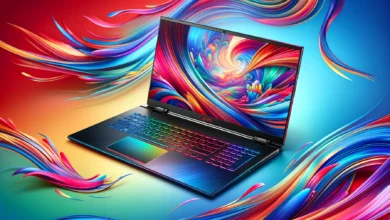The Power of XCV Panels: Key Features, Advantages and Disadvantages

The technological landscape is ever-evolving, constantly pushing the boundaries of what’s possible. In display technology, the XCV Panel represents a significant leap forward. Combining advanced solar technology and cutting-edge display mechanisms, XCV Panels are set to redefine how we interact with our devices. This article aims to elucidate the intricacies of XCV Panels, their operation, benefits, and the transformative role they play in both the tech and energy sectors.
What is an XCV Panel?
An XCV Panel is a sophisticated form of solar panel technology that integrates the principles of solar energy with modern display technologies like OLED and quantum dots. These panels are not just a step up from traditional solar panels; they are a leap toward sustainable energy solutions that merge energy generation with high-end display functionality. The XCV stands for extended control and visualization, highlighting its dual function as both an energy solution and an advanced display unit.
How XCV Panels Work

The functioning of XCV Panels can be seen as a two-fold process:
Solar Energy Harnessing: At its core, the panel uses photoelectric cells to convert sunlight into electricity, much like conventional solar panels. However, the XCV panel’s efficiency and energy consumption metrics are enhanced to cater to both power generation and high-quality display.
Advanced Display Technology: The panel incorporates a layer of OLEDs beneath a layer of quantum dots. The OLEDs emit white light, which passes through the quantum dots, transforming it into rich, vivid colors. This method allows for dynamic color adjustment, which is crucial for displays requiring high brightness and contrast levels.
Key Features and Specifications
User Interface
XCV Panels provide a user interface that is rich in features such as high-quality graphics and multi-touch gestures. This interface is not only user-friendly but also highly intuitive, allowing for seamless interaction between the user and the device.
Customization and Scalability
One of the most significant advantages of XCV Panels is their versatility. Industries can customize these panels to fit specific needs, enhancing their efficiency and utility in various applications. The scalability of XCV Panel technology makes it a preferred choice for businesses looking to adopt clean and renewable energy solutions while maintaining high performance in display technology.
Real-Time Control and Monitoring
XCV Panels are equipped with sophisticated real-time control systems that allow users to monitor and adjust settings instantly. This feature is particularly beneficial for industries where precision and real-time data are crucial, enabling energy efficiency and operational effectiveness.
Enhanced Security Features
With cybersecurity becoming a critical concern, XCV Panels incorporate advanced security protocols to protect against unauthorized access. This feature ensures that sensitive information related to energy consumption and operational data remains secure, making these panels a reliable choice for critical infrastructure.
Communication Compatibility
XCV Panels support a variety of communication protocols, including MQIT, OPC-UA, and Modbus. This compatibility allows for seamless integration into existing systems, facilitating the adoption of XCV technology across various platforms and enhancing the scalability of XCV panels in diverse technological environments.
Applications of XCV Panels
XCV Panels have a wide array of applications across different sectors:
Consumer Electronics: In devices like smartphones and tablets, XCV panels enhance the visual experience by providing exceptional resolution, contrast, and colour accuracy. Their low energy consumption also extends device battery life, making them more efficient.
Commercial Use: In larger displays such as TV projectors and monitors, XCV Panels offer superior display qualities without the high energy cost, making them ideal for both home and office environments.
Industrial Applications: The robustness and adaptability of XCV Panels make them suitable for industrial applications where reliability and efficiency are critical. Their ability to operate under various environmental conditions makes them invaluable in these settings.
Advantages Of Traditional Display Technologies
Compared to standard LCD and LED technologies, XCV Panels offer:
Higher Brightness and Contrast
With capabilities to reach brightness levels over 10,000 nits and contrast ratios of 1,000,000: 1, XCV Panels ensure vivid and detailed visual outputs.
Greater Energy Efficiency
These panels consume significantly less power, with less than 10 watts per square meter, making them a sustainable energy solution.
Superior Color Accuracy
Achieving over 99% of the DCI-P3 color gamut, the panels provide industry-leading color accuracy, essential for high-definition and professional-grade displays.
Disadvantages
Initial Cost
While XCV Panels provide long-term energy savings and operational benefits, the initial installation cost can be high. This might be a barrier for smaller businesses or residential users considering the transition to this advanced solar panel technology.
Technological Complexity
The advanced technology behind XCV Panels requires specialized knowledge for installation, maintenance, and troubleshooting. This complexity can pose challenges for adoption, especially in regions with a lack of technical expertise.
Weather Dependency
Like all solar technologies, XCV Panels’ performance is partially dependent on weather conditions. Although they convert sunlight into electricity efficiently, their energy output can be significantly lower during cloudy or rainy days.
The Future Potential of XCV Panels

The introduction of XCV Panels into the market is just the beginning. Their potential to reshape industries is immense, given their revolutionary approach to integrating solar technology with high-end display capabilities. As they become more widespread, their impact on energy efficiency, sustainable development, and technological innovation will be profound.
Bottom-Line
XCV Panels are not merely an advancement in display or solar panel technology; they are a comprehensive solution poised to revolutionize multiple industries. By harnessing solar energy and providing unparalleled display qualities, XCV Panels represent a significant step towards a more resilient and sustainable energy future. Their development is a testament to the incredible potential of modern technology to create solutions that are not only effective but also environmentally responsible.
FAQs
What are XCV Panels?
XCV Panels are advanced display devices that integrate OLED and quantum dot technology with solar panel capabilities. They are designed to harness solar energy and convert it into electricity while providing high-quality visual displays.
How do XCV Panels work?
XCV Panels work by using a layer of OLEDs to emit light, which passes through quantum dots to create vibrant colors. This technology allows for dynamic color adjustment and high energy efficiency in converting sunlight into electricity.
What are the main applications of XCV Panels?
XCV Panels are used in various sectors, including consumer electronics (like smartphones and tablets), commercial setups (such as monitors and projectors), and industrial applications, where they provide enhanced display and energy solutions.
What are the advantages of using XCV Panels over traditional display technologies?
XCV Panels offer numerous advantages such as higher brightness, superior contrast, exceptional color accuracy, and significant energy savings compared to conventional LCD and LED screens.
What are the main challenges associated with XCV Panels?
The primary challenges include the high initial cost, the complexity of the technology requiring specialized knowledge, dependency on weather conditions for optimal energy production, issues with size and integration into existing aesthetics, and the need for specialized disposal methods to handle the advanced materials used in the panels.



